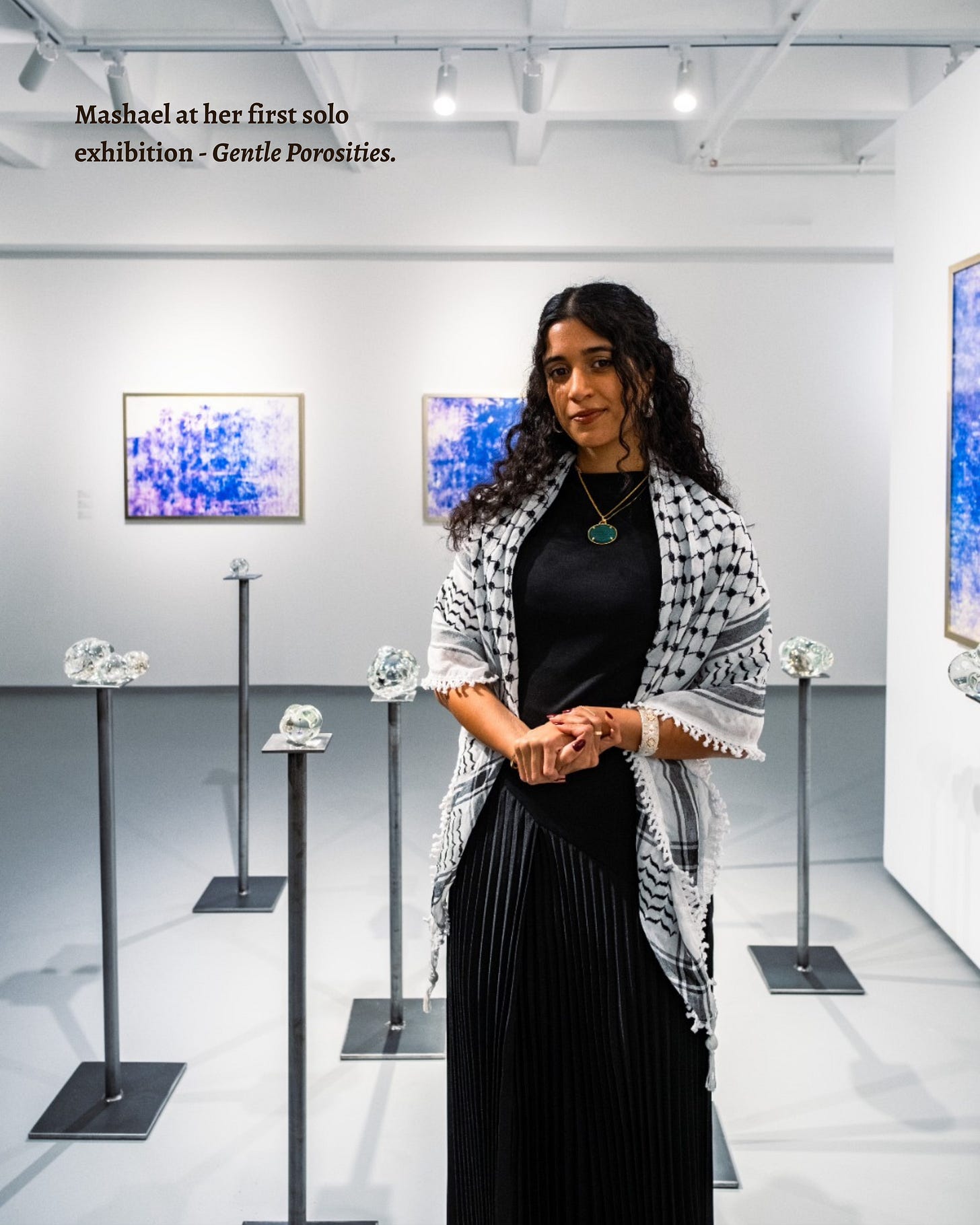On Her Process:
“I think there are some things that I am inherently drawn to.”
Mashael AlSaie’s work often starts with a question - a question naturally related to topics the artist feels an open curiosity toward. More often than not, these topics are consistently linked to the land, and specifically, a relationship to its natural resources. In her recent work, Barren Spring, the artist focused on water - creating abstract forms which evoke a sense of the material’s fluidity through their forms. When speaking on her thought process behind the work, Mashael elaborated on a fascination with the story of Ain Adhari, a natural spring with ancient significance within Bahraini history, “I was fascinated by my literal proximity to a specific site that piqued my interest… that took me to thinking about nythologies related to water.”
In discussing her process, Mashael conveyed her openness to figuring out how these stories could be explored. “The material happens after the question”, she says. Taking Barren Spring as an example, the artist began looking at these water mythologies through the lens of photography. “I was trying to tell it with photography, and I don’t think I got there.” It was at this point that she began exploring glass.
“Glass just kind of came up during that time. I took a few classes and then I became obsessed and then, you know, I started to see the poetry in the material itself.”
On Materials:
For Mashael, material is not just a means to an end - it is part of the story. With glass, what began with a desire to delve into water, morphed into a larger curiosity around the material’s properties and the poetry that can be found within it.
“Because glass for me is like…it’s sand that is subjugated to such high heats and then it's turned into something that looks like water. Like how incredible is that? Like the amount of violence enacted onto glass.”
As with glass, the artist voiced a similar curiosity regarding the properties of metal - hinting at future work exploring the material. “And then, you know, with metal, it's kind of that as well. There's this very strong sturdy thing that was once this like… liquidy mousse.”
Looking at these explorations of material within the artist’s broader engagement with mythology and storytelling, it is clear to see that the artist’s work holds even more poetic depth than a viewer might first notice.
On Responses to Her Work:
Perceptions of Mashael’s latest work frequently pick up on a feeling of softness and femininity. When asked about this, the artist responded with understanding - “land has always been linked to this concept of the divine feminine”, she says. Despite this, she specifies, “I’m not necessarily gendering the myth”. Delving deeper, Mashael speaks of her openness and curiosity to the manner in which her work is being received, but made it clear that categorization of her overall practice as feminist art might be misleading - “I’m not putting myself in that box”. “It’s more about the sensitivity to land”, she elaborates.
Nevertheless, when asked whether these perceptions of softness and “the ethereal” were topics she might want to explore further, the artist responded with enthusiasm. “One hundred percent... I’m very curious on how far I can take it.” In relation to her latest explorations with metal, she questions, “how can I make this rough industrial material feel… soft?”.
On Future Directions:
In the future, we can expect to see more studies of material within Mashael’s work, rooted within a larger exploration of regional culture and mythology. Her hints toward metal specifically are telling, suggesting a movement toward studying the industrial as opposed to the ethereal.
Within her day job at the Diriyah Biennale Foundation, Mashael is influenced in ways that have helped steer her practice. “One of the things that has been such an inspiration for me this year is learning about Islamic art and Islamic art objects.” Specifically, Mashael refers to objects that have come from Islamic thinkers, and utilize advanced culture and science.
In exploring these histories, Mashael says, “I might go away from the camera for a while, and then come back to it eventually.” Whatever Mashael chooses to explore, her work will undoubtedly weave together a poetry of material and mythology.






